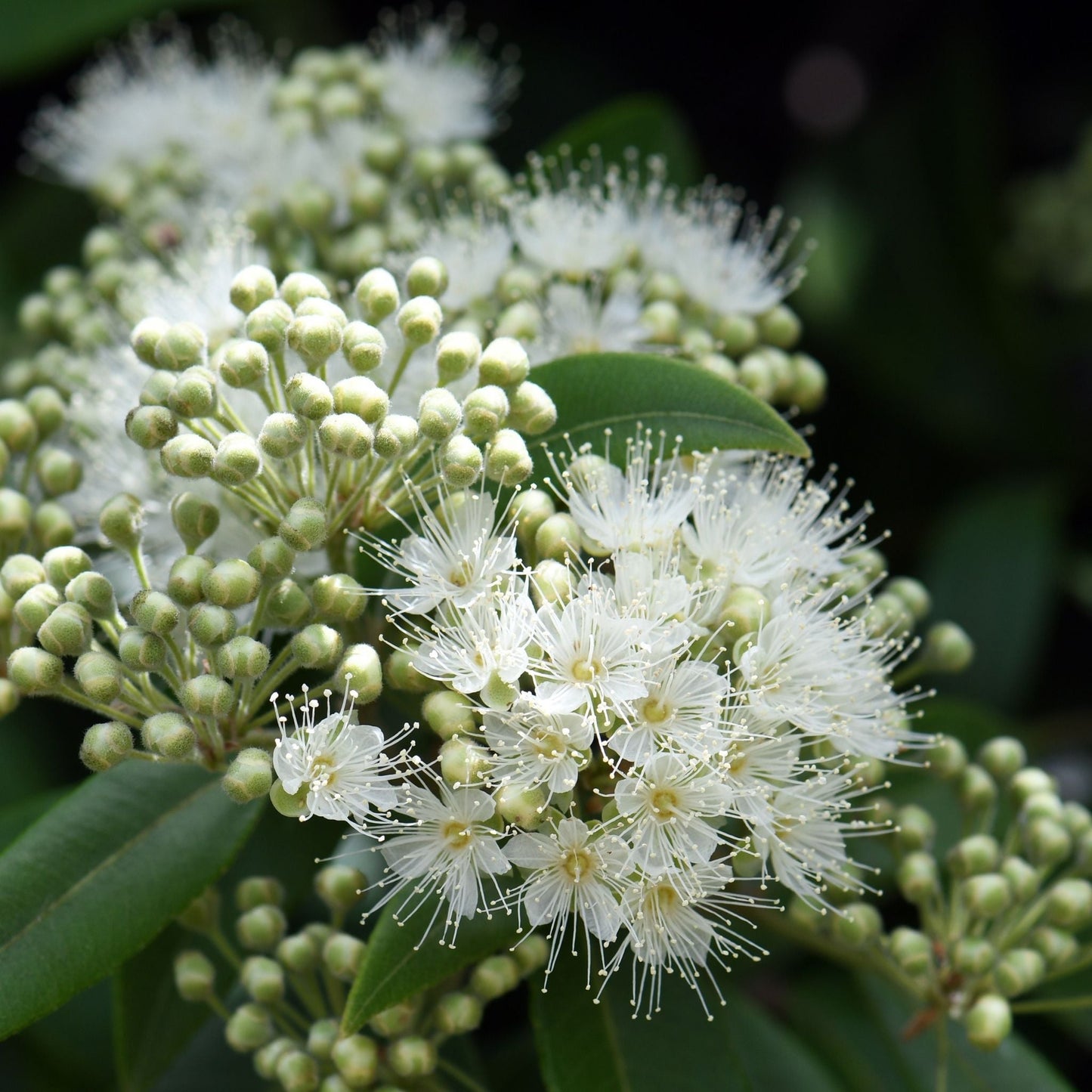Lemon Myrtle Essential Oil
Lemon Myrtle Essential Oil
Backhousia citriodora
Common Uses
Common Uses
The leaves of the Lemon Myrtle contain between 0.33 - 0.86% essential oil consisting almost entirely of citral (90-98%) which is what gives it that lovely and unique lemony aroma. Citral has been shown to exhibit sedative, anti-viral and anti-fungal properties. Lemon Myrtle has very strong antibacterial properties. A wonderful mood lifter and calming, it's the most antiseptic, antiviral, antifungal of the Australian essential oils. Lemon Myrtle essential oil is extracted via steam distillation of the leaves and green branchlets and the oil is a clear to amber yellow color. Because of its high citral content, lemon myrtle is used for a wide variety of medicinal purposes too.
A truly wonderful, uplifting, refreshing lemon aroma - it is a favorite in oil burners and diffusers due to its fresh lemony fragrance and strong anti-bacterial properties and is also good in massage blends. It is also a favorite for use in soaps, hand sanitisers, body lotions, shower gels, shampoos, household cleaning products and more. Lemon Myrtle essential oil is said to be ‘lemonier’ than any other lemon oil. Do not use Lemon Myrtle essential oil at a rate greater than 1% in body products, as skin sensitisation occurs.
Studied Properties
Studied Properties
With antioxidant, antimicrobial and anti-inflammatory compounds, lemon myrtle is nature’s own sanitizer. Lemon myrtle has 4-7 times the antioxidant value than blueberry. Antioxidants have many uses in the cosmetics and food industries and have been known to slow the aging process by reducing oxidative stress in the body. Lemon myrtle can also be used in a wide range of beauty and body products, in household cleaning products and has a wide range of medicinal uses.
The leaves of the Lemon Myrtle contain between 0.33 - 0.86% essential oil consisting almost entirely of citral (90-98%) which is what gives it that lovely and unique lemony aroma. Citral has been shown to exhibit sedative, anti-viral and anti-fungal properties. Lemon Myrtle has very strong antibacterial properties. A wonderful mood lifter and calming, it's the most antiseptic, antiviral, antifungal of the Australian essential oils. Lemon Myrtle essential oil is extracted via steam distillation of the leaves and green branchlets and the oil is a clear to amber yellow color. Because of its high citral content, lemon myrtle is used for a wide variety of medicinal purposes too.
With a wonderful, uplifting, refreshing lemon aroma, Lemon Myrtle is one of Australia’s newest and most exciting essential oils. Lemon Myrtle (Backhousia citriodora) is a slow-growing, subtropical flowering plant with a strong lemon scent, native to southeast Queensland, Australia.
The Australian aboriginals have used lemon myrtle both in food and in medicinal treatments for hundreds of years. The antimicrobial properties of the oil were discovered in the 1920’s but the oil wasn’t distributed internationally until the 1990’s, with demand growing every year. Boasting the highest level of citral content (more than lemon!), it also outshines other species' antimicrobial qualities. Other minor constituents include myrcene, linalool, and methyl-heptanone. Lemon Myrtle’s leaves are a germicide, showing more potency than either eucalyptus or tea tree.

More about Lemon Myrtle Essential Oil
-
Studied Properties
- Antioxidant
- Antimircobial
- Anti-inflammatory
- Antifungal
- Antibacterial
-
Common Uses
- Cleaning
- Skin Care
- Aromatherapy
- Body Care
- Anti-Aging
-
Featured Constituents
- citral
- myrcene
- linalool
- methyl-heptanone
While care is taken in good faith to ensure the information offered here is reliable and correct, Naturally Australian Products Inc cannot guarantee the accuracy of information and recommends that each ingredient be further researched with respect to its use.

